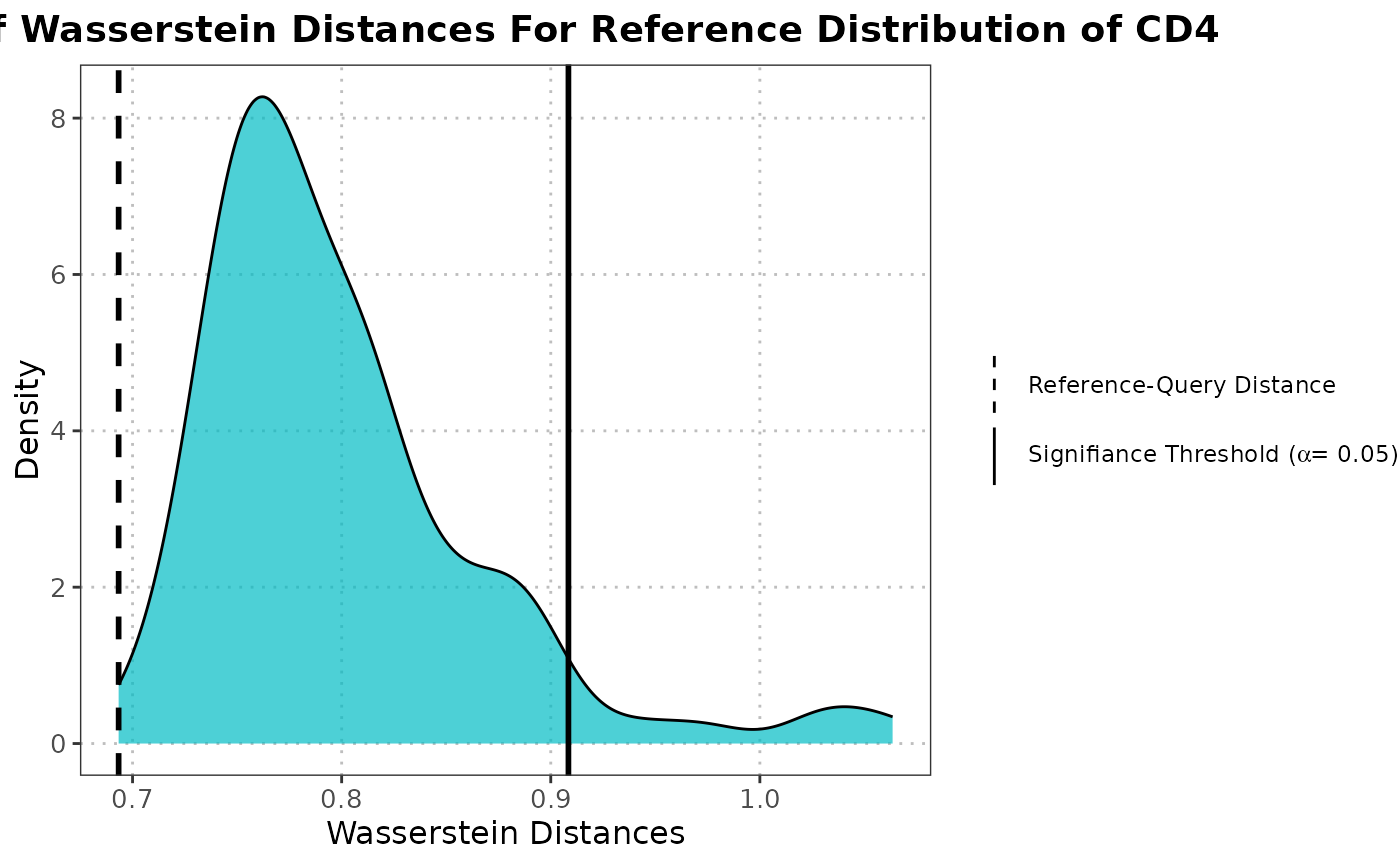Plot Density of Wasserstein Distances for Null Distribution
Source:R/plot.calculateWassersteinDistanceObject.R
plot.calculateWassersteinDistanceObject.RdThis function generates a density plot of Wasserstein distances for the null distribution of a `calculateWassersteinDistanceObject`. Additionally, it overlays lines representing the significance threshold and the reference-query distance.
# S3 method for class 'calculateWassersteinDistanceObject'
plot(x, alpha = 0.05, ...)Arguments
Value
A ggplot2 object representing the ridge plots of Wasserstein distances with annotated p-value.
Details
The density plot visualizes the distribution of Wasserstein distances calculated among
reference samples, representing the null distribution. A vertical line marks the
significance threshold based on the specified alpha. Another line indicates the
mean Wasserstein distance between the reference and query datasets.
References
Schuhmacher, D., Bernhard, S., & Book, M. (2019). "A Review of Approximate Transport in Machine Learning". In *Journal of Machine Learning Research* (Vol. 20, No. 117, pp. 1-61).
See also
Examples
# Load data
data("reference_data")
data("query_data")
# Extract CD4 cells
ref_data_subset <- reference_data[, which(reference_data$expert_annotation == "CD4")]
query_data_subset <- query_data[, which(query_data$expert_annotation == "CD4")]
# Selecting highly variable genes (can be customized by the user)
ref_top_genes <- scran::getTopHVGs(ref_data_subset, n = 500)
query_top_genes <- scran::getTopHVGs(query_data_subset, n = 500)
# Intersect the gene symbols to obtain common genes
common_genes <- intersect(ref_top_genes, query_top_genes)
ref_data_subset <- ref_data_subset[common_genes,]
query_data_subset <- query_data_subset[common_genes,]
# Run PCA on reference data
ref_data_subset <- scater::runPCA(ref_data_subset)
# Compute Wasserstein null distribution using reference data and observed distances with query data
wasserstein_data <- calculateWassersteinDistance(query_data = query_data_subset,
reference_data = ref_data_subset,
query_cell_type_col = "expert_annotation",
ref_cell_type_col = "expert_annotation",
pc_subset = 1:5,
n_resamples = 100)
plot(wasserstein_data)
